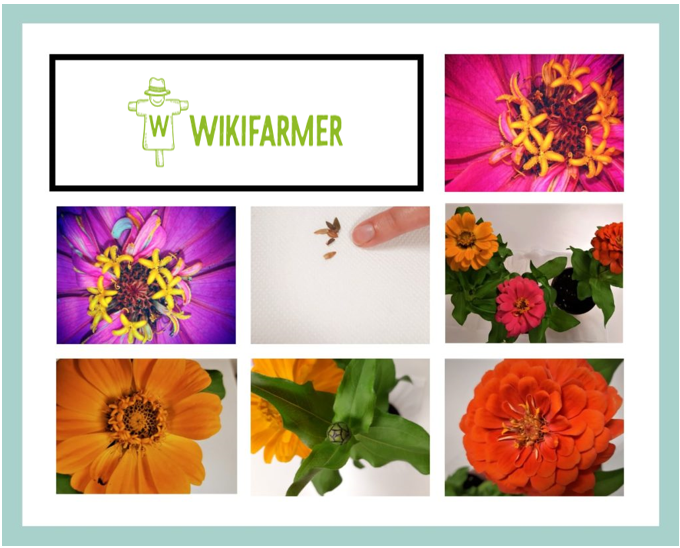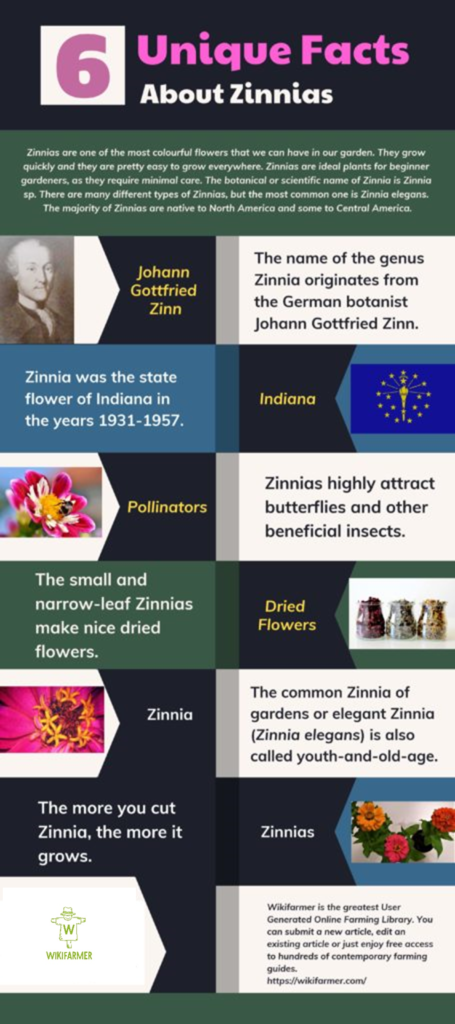Zinnia Plant Information

This post is also available in:
This post is also available in:
![]() Español (Spanish)
Español (Spanish) ![]() Français (French)
Français (French) ![]() Deutsch (German)
Deutsch (German) ![]() Nederlands (Dutch)
Nederlands (Dutch) ![]() हिन्दी (Hindi)
हिन्दी (Hindi) ![]() العربية (Arabic)
العربية (Arabic) ![]() Türkçe (Turkish)
Türkçe (Turkish) ![]() 简体中文 (Chinese (Simplified))
简体中文 (Chinese (Simplified)) ![]() Русский (Russian)
Русский (Russian) ![]() Italiano (Italian)
Italiano (Italian) ![]() Ελληνικά (Greek)
Ελληνικά (Greek) ![]() Português (Portuguese (Brazil))
Português (Portuguese (Brazil)) ![]() Indonesia (Indonesian)
Indonesia (Indonesian) ![]() 한국어 (Korean)
한국어 (Korean)
Zinnias are one of the most colorful flowers that we can have in our garden. They grow quickly and they are pretty easy to grow everywhere. Zinnias are ideal plants for beginner gardeners, as they require minimal care. The botanical or scientific name of Zinnia is Zinnia sp. There are many different types of Zinnias, but the most common is Zinnia elegans. The majority of Zinnias are native to North America and some to Central America.
 Zinnia belongs to the Asteraceae family, also known as the daisy family. It is a bushy plant or sub-shrub with tolerance to low temperatures, but it cannot survive the frost. Each type has a slightly different leaf shape. They can be pointy like arrows, lance-shaped or narrow, rough or soft, depending on the species. The flowers come in all various kinds of colors and shapes as well. Some flowers resemble daisies, others remind us of cactus, while other zinnias flowers look like dahlias. The color range includes white, yellow, orange, red, rose, pink, purple, lilac and multicolored blooms. For example, Zinnia angustifolia has a small and orange flower, while Zinnia peruviana has red, purple or yellow petals. The height of zinnia plant also varies, depending on the variety, but it can range from 15cm to 1,0m (6 inches – 40 inches).
Zinnia belongs to the Asteraceae family, also known as the daisy family. It is a bushy plant or sub-shrub with tolerance to low temperatures, but it cannot survive the frost. Each type has a slightly different leaf shape. They can be pointy like arrows, lance-shaped or narrow, rough or soft, depending on the species. The flowers come in all various kinds of colors and shapes as well. Some flowers resemble daisies, others remind us of cactus, while other zinnias flowers look like dahlias. The color range includes white, yellow, orange, red, rose, pink, purple, lilac and multicolored blooms. For example, Zinnia angustifolia has a small and orange flower, while Zinnia peruviana has red, purple or yellow petals. The height of zinnia plant also varies, depending on the variety, but it can range from 15cm to 1,0m (6 inches – 40 inches).
6 facts about Zinnia you probably didn’t know
- The name of the genus Zinnia originates from the German botanist Johann Gottfried Zinn.
- Zinnias highly attract butterflies and other beneficial insects.
- Zinnia was the state flower of Indiana in the years 1931 – 1957.
- The small and narrow-leaf Zinnias make nice dried flowers.
- The common Zinnia of gardens or elegant Zinnia (Zinnia elegans) is also called youth-and-old-age.
- The more you cut Zinnia, the more it comes back









































































